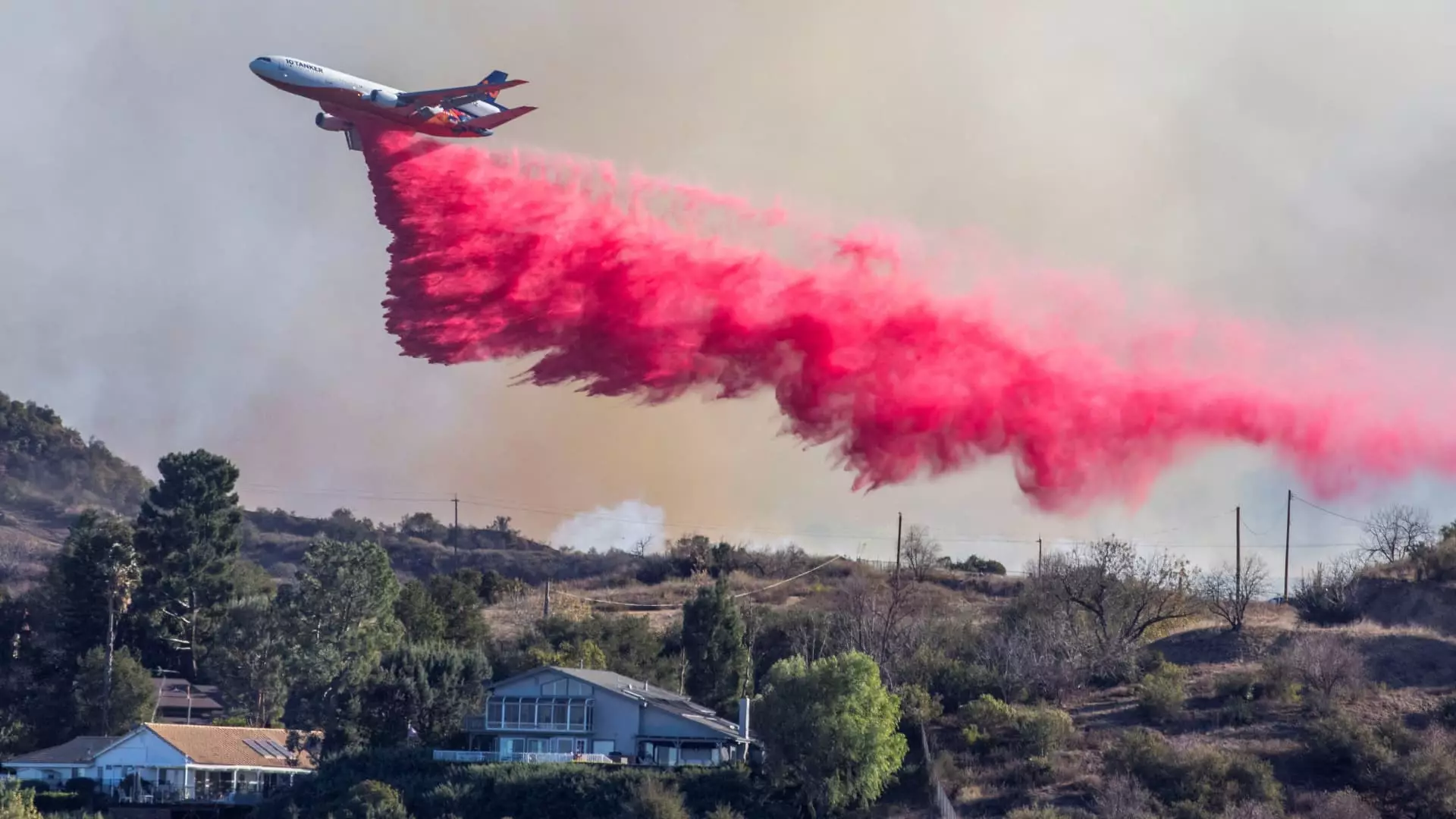Wildfires have long been an annual crisis for California, particularly threatening urban areas like Los Angeles. In a recent incident, wildfires exacerbated by extreme winds and dry conditions wreaked havoc, highlighting the pressing need for effective firefighting resources. Despite typically being off-season for wildfires during this time of year, aerial firefighting companies found themselves in a frantic scramble to deploy aircraft and support ground crews. This alarming situation underscores the unpredictable nature of wildfire behavior and the critical role that aerial firefighting plays in managing these catastrophic events.
The California Department of Forestry and Fire Protection (Cal Fire) operates an extensive fleet of firefighting aircraft, boasting over 60 fixed-wing and rotor-wing planes. However, the significant demand for aerial support often exceeds the availability of state resources. A leading player in this industry is 10 Tanker Air Carrier, which has converted its DC-10 aircraft into very large air tankers (VLATs) to combat wildfires. The company’s CEO, Joel Kerley, emphasizes that even though these aircraft are designed for firefighting, the unpredictable nature of the fires can result in a lack of available resources when they are most needed.
Airborne firefighting is a dynamic field, as companies like 10 Tanker respond to increasing year-round demand. The U.S. Forest Service’s newly extended contracts worth billions demonstrate the government’s reliance on these private enterprises to bolster firefighting efforts. Yet, the geographical unpredictability and increasing intensity of wildfires necessitate expanding fleets and capabilities to enhance effectiveness.
The history of aerial firefighting has evolved significantly over the last several decades, with the emergence of specialized aircraft designed to fight fires efficiently. Companies worldwide, from Australia to Chile, have recognized the importance of developing their fleets to meet rising wildfire threats. The United Nations Environment Program projects that as climate change continues to influence weather patterns, wildfires will become more frequent and severe, amplifying the need for aerial resources.
Kerley pointed out some of the most challenging fires to combat this year, including the Palisades and Eaton fires. Fueled by powerful winds, these fires devastated numerous neighborhoods and destroyed thousands of structures, resulting in tragic loss of life. The sudden uptick in fire intensity during what is traditionally considered the off-season serves as a stark reminder that wildfire threats are evolving, and preparedness must adapt accordingly.
Firefighting from the air relies on seamlessly coordinating both personnel and equipment. Aerial firefighters must face numerous challenges, from unfavorable weather conditions to the logistics of deploying and maintaining aircraft. Pilots often shift from passenger airlines or military backgrounds, bringing diverse experiences to the unforgiving task of combating raging infernos. The complexity of aerial firefighting requires not just skilled pilots but also a highly trained support team.
The use of specially formulated fire retardants dropped from aircraft is an essential tactic. Aerial deployers, like those from 10 Tanker, have reported thousands of gallons of fire retardant utilized in high-stakes firefighting operations. However, the terrain and wind factors present significant obstacles, creating varying degrees of success with each drop.
Innovation is crucial for addressing the widening scope of wildfire threats. As older aircraft retire, manufacturers like De Havilland Aircraft focus on developing modern firefighting aircraft with enhanced capabilities. The anticipated DHC-515 adds advanced technology to improve fire management, signaling a shift toward more efficient and capable firefighting resources.
The aviation industry’s adaptation to climate change can no longer be understated. As Neil Sweeney of De Havilland points out, the increasing frequency of wildfires necessitates a more robust fleet to ensure effective response strategies. The merging of historical techniques with cutting-edge technology is vital as the world confronts an escalating crisis of climate-driven wildfires.
The battle against wildfires demands constant vigilance and adaptation. Aerial firefighting provides a vital support system, yet it struggles under rising demands precipitated by climate change and unforeseen conditions. When the next fire ignites, the question remains not just if resources will be available, but also if they will be sufficient to counter the fierce, unrelenting nature of wildfires. The future of our reliance on air support lies in addressing these pressing challenges head-on.

